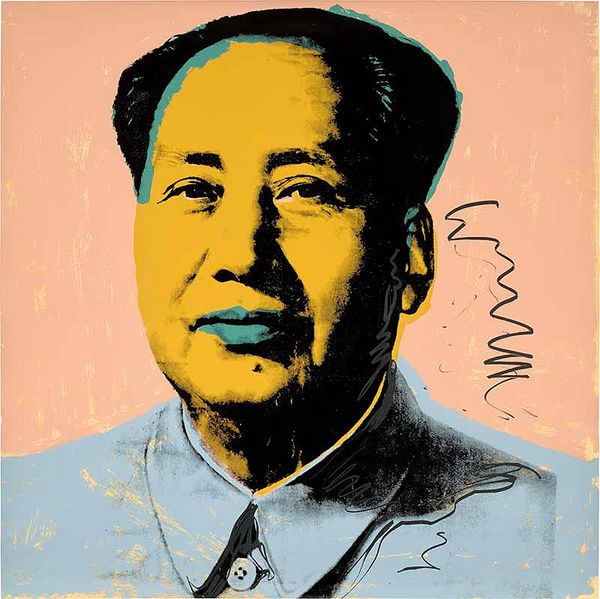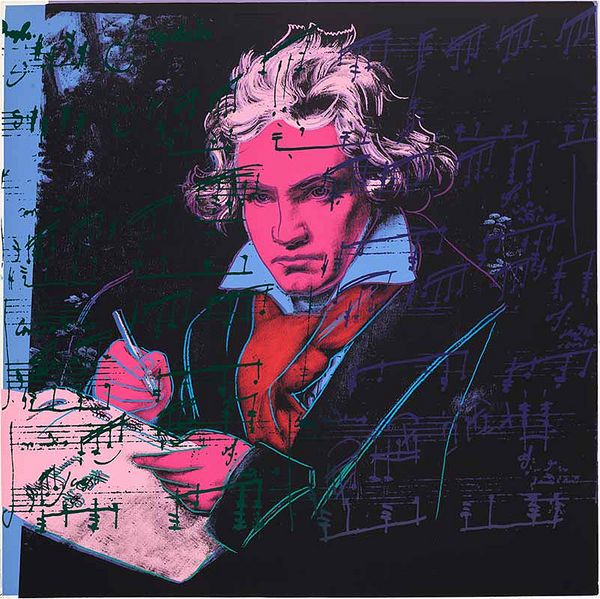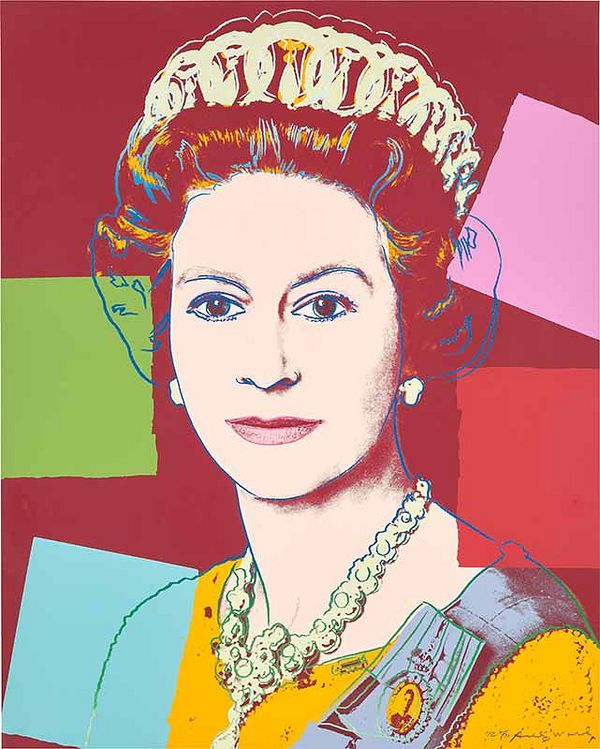Andy Warhol, Mao, 1972. Evening & Day Editions, London.
Power is obsessed with image. Why wouldn't it be? Across mediums and technologies, the two form a relationship that, in theory, benefits the power behind the image. In the hands of Andy Warhol, however, this alliance gets a bit shaky. Perception precedes reality, and the best thing about a picture, the artist famously noted, is that it never changes, even when the people in it do. On offer as part of our 21-22 September London Editions Sale, these iconic portraits tell the visual story of power and the ways in which Warhol upended its intentions.
Ubiquity, or a Consequence Thereof
In the year following U.S. President Richard Nixon’s 1972 visit to China, Warhol fervently executed nearly 200 silkscreens of Chairman Mao Zedong. These works were created in the various scales (some as large as 15 feet tall) and palettes as many of his previous portraits, however a critical departure in both subject and essence emerged from these depictions of the Chinese ruler: rather than examining celebrity as a serialized occurrence spread among actors, singers, or artists, Warhol found in Mao a vessel of entirety, a totalizing figure whose image alone made fame and celebrity fall short in comparison to the personality cult; a gap in which power rushes to fill every available space. The source portrait was itself ubiquitous, as it was reproduced endlessly throughout the world during the Cultural Revolution, and Warhol’s rendering of it is almost astringent – this is the image of a political figure whose presentation was mysterious and calculated, now flattened for consumption in the continuum of popular culture; a place where, ultimately, power cannot hold, because it cannot be wielded for very long. “Everything seeks its own heightened version,” Don DeLillo wrote in Mao II, which featured this very series on its cover.
Control, or a Lack Thereof
Andy Warhol, Beethoven, 1987. Evening & Day Editions, London.
Compare Mao’s measured pervasiveness with Ludwig van Beethoven’s notorious inability to sit still, and thus only ever posing for a single portrait during his lifetime. The brooding composer sat for painter Joseph Karl Stieler between February and April 1820, clutching the manuscript for Missa solemnis in hands which Steiler had to paint from memory, since after four sittings Beethoven grew tired with the process and did not return. Warhol, for his version, keenly highlighted the agitation of not being in control over creative intentions with Beethoven’s reddened skin and scribbles throughout, and in doing so imbued his own contemporary context to the composer’s image. Despite the repetitive notation being largely illegible or incorrect (it is actually the sketching for Moonlight Sonata), it wouldn’t matter if the viewer could read music: by the mid twentieth century, four notes in a sequence imposed over a picture of Beethoven only meant one piece: the Fifth Symphony, which begins with fate rapping four knocks at the door. Power, in this interpretation, is a force against the artist’s will. Created shortly before Warhol’s death in 1987, feelings of notoriety, legacy, and interpretation are on full display in this work.
Myth, or an Embrace Thereof
Andy Warhol, Queen Elizabeth II of the United Kingdom, from Reigning Queens (Royal Edition), 1985. Evening & Day Editions, London.
Warhol’s 1985 Reigning Queens series depicts the four contemporaneously ruling queens of the time, including Queen Margrethe II of Denmark, Queen Beatrix of the Netherlands, and Queen Ntombi Twala of Swaziland, but none more omnipresent than Queen Elizabeth II of the United Kingdom, whose image adorned everything from currencies to pincushions. The base portrait was from a 1977 Silver Jubilee photograph, and by 1985 the Queen had presided over more than three decades’ worth of image-making and disseminating technologies, from the rise of television and nightly news, to printmaking and tabloid media, and none of it was lost on Warhol. Rather than traditional paintings of royalty, the now-favored medium became the photograph, the Queen was among the most photographed people on Earth, and the speed with which her likeness propagated mirrored the ways in which the world grew ever smaller, yet confounded with relentless imagery. The mythical image becomes the real thing; it becomes public-facing as soft power. The image of the Queen becomes reproducible and multipurpose as part of a relationship with its own circulation – symbolic power cedes itself to the usefulness of myth, and Warhol seized the opportunity to capture it.
Devotion, or a Sense Thereof
Andy Warhol, Saint Apollonia, 1984. Evening & Day Editions, London.
Iconography and its repurposing into secular art is a well-trodden field, however if we were to imagine an altar in Warhol’s house of image worship, who else but Saint Apollonia could rest upon the apse? If we all have dreams about our teeth falling out, then we can only imagine how often such visions rustled Warhol’s famous subjects out of a night’s sleep. The patron saint of dentistry and toothaches embodies the artist’s concentric layering of veneration, submission, fidelity, and the power of the image to maintain and create meaning. Unlike many of Warhol’s heavily altered portraits, Saint Apollonia retains most of the features of Piero della Francesca’s 1455/60 work with similar cracking to the original tempera backdrop, showcasing a kind of restraint on Warhol’s part in rendering the saint’s image as one which didn’t require the ornamentation so often found with his more glamorous subjects. In this way, we see Warhol’s 1980s-era fascination with historical figures combine with his knack for anointing stardom. Rather than celebrate an established face, Warhol plucks a saint from obscurity and places her into the spotlight – an icon for the icons; an idol for the idols; a power above the powerful, and all we have to do to show faith is flash our pearly whites.
Discover More from Editions London >
Recommended Reading



